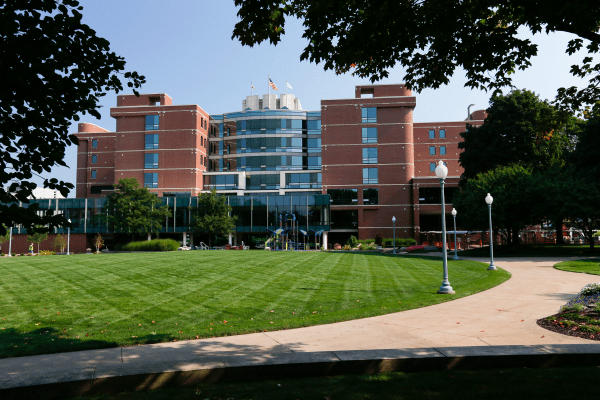
Project Title:
Development of an Enzyme Replacement Therapy for Primary Congenital Glaucoma
Principle Investigator:
Rachida Bouhennni, PhD
Institution:
Akron Children’s Hospital
Lay Summary
Glaucoma is a group of diseases that damage the eye’s optic nerve and can lead to vision loss and blindness. Elevation of the pressure within the eye due to improper drainage of the fluid (aqueous humor, AH) in the front of the eye is the major risk factor for glaucoma. In the pediatric form of glaucoma, also known as primary congenital glaucoma (PCG), children are born with a defect in the angle (trabecular meshwork, TM) of the eye that slows the normal drainage of AH. The disease is caused by a mutation in a gene called cytochrome p450 B1 (CYP1B1). The function of this gene is not known but it is thought that it is involved in vitamin A processing in the eye. Because PCG results from a defective enzyme, we hypothesize that replacing the defective enzyme could rescue the phenotype. The long-term goal of this proposal is to develop an enzyme replacement therapy for PCG.
Professional Summary
Primary Congenital Glaucoma (PCG) is a rare inherited recessive disease caused predominantly by mutations in the cytochrome P4501B1 (CYP1B1) gene. PCG is associated with developmental defects in the trabecular meshwork and the anterior segment of the eye leading to increased intraocular pressure (IOP) and damage to the optic nerve. If left untreated PCG can lead to blindness. Current treatment of PCG is mainly surgery which has to be performed as early as possible. Although, success of the surgery is relatively good in lowering IOP, complications are common requiring additional surgeries or placement of drainage devices. Additionally, the current medical therapies are not effective in lowering IOP because of the significant anatomical anomaly of the mal-developed anterior drainage angle in PCG patients. Therefore, there is an urgent need for a safer non–surgical approach to treat these patients. The long term goal of this project is to develop an enzyme replacement therapy (ERT) using recombinant CYP1B1 to treat PCG. We have previously shown that mutations in CYP1B1 leads to accumulation of all trans retinal resulting in activation of p53 leading to growth arrest. Our central hypothesis is that replacement of the deficient enzyme with an exogenous enzyme injected into the eye in PCG will treat the disease by eliminating all trans retinal in the trabecular meshwork thus reducing oxidative stress and the subsequent growth arrest. We will test the central hypothesis by assessing the efficacy of a local injection of recombinant CYP1B1 in vivo for the correction of PCG in a mouse model. This proposal will investigate a novel and innovative therapeutic strategy of replacing defective CYP1B1 in PCG. These studies offer a promising new approach not yet fully considered, for the treatment of PCG. A readily available efficacious and safe alternative method is critically needed to improve patient outcomes and the quality of life for children with PCG.

 DONATE NOW
DONATE NOW